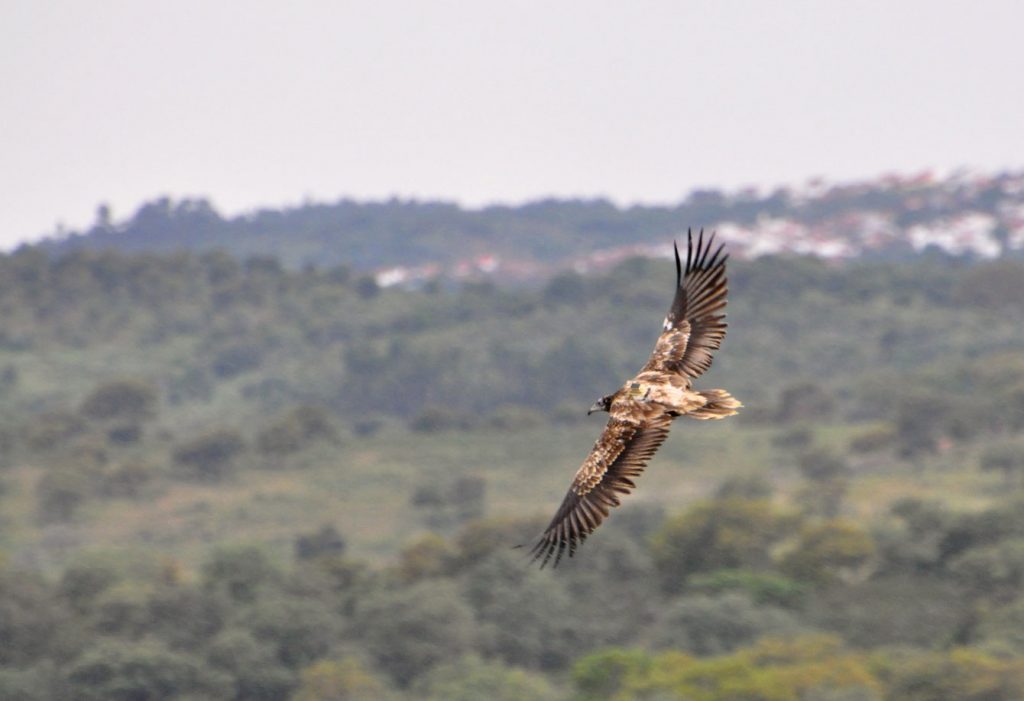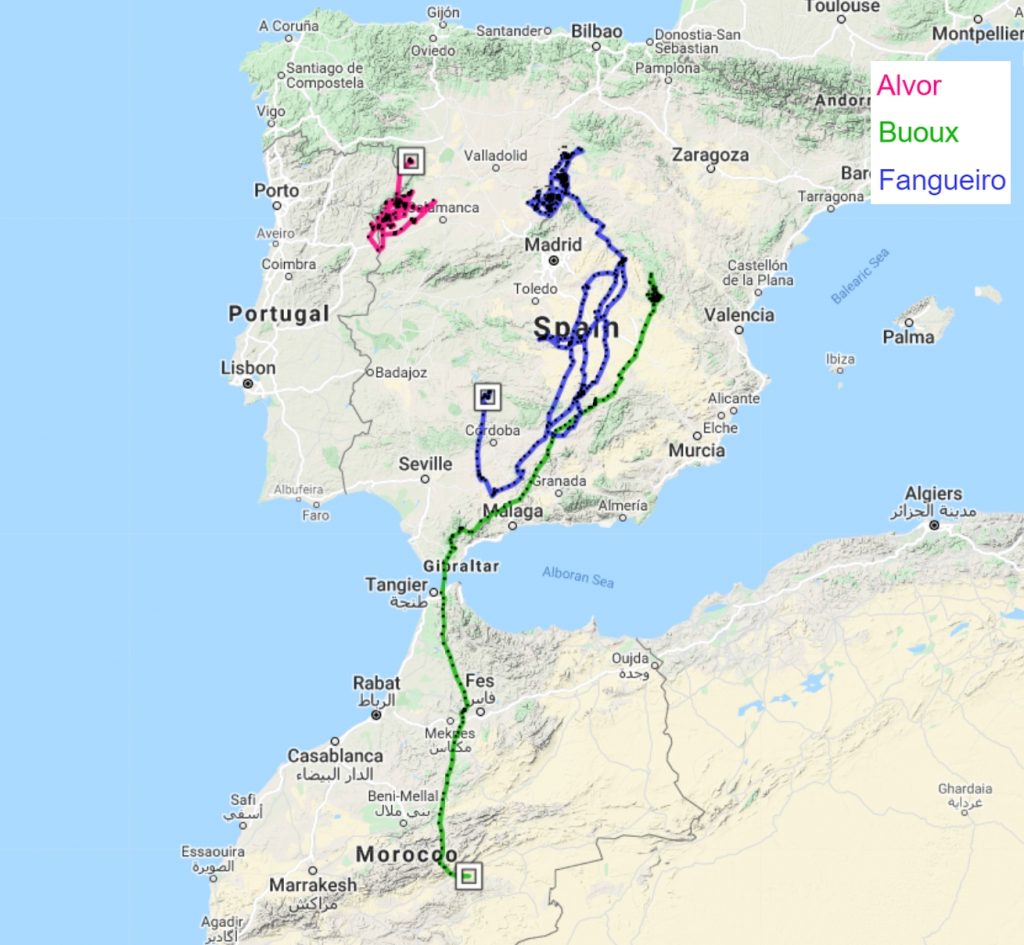
The Egyptian Vulture autumn migration has already begun! Several of our GPS-tagged Egyptian Vultures started heading south to embark on their long migration journey from Europe to Africa. The Egyptian Vulture is Europe’s only long-distance migratory vulture, with some individuals even covering distances of almost 11,000 km during their round trips.
The Egyptian Vulture autumn migration
Every year, adult and young birds leave their breeding and hatching places, respectively, to travel from Europe to Africa. Young birds then usually stay in Africa for at least 18 months (sometimes longer) before returning to their natal origins in Europe in the spring, and starting their annual cycle of migration to Africa in the autumn and back to Europe in the spring. After five or six years they reach sexual maturity and try to establish their own territory and form a breeding pair, often not far from where they hatched themselves. Although most Egyptian Vultures in Europe migrate, there are a few exceptions – some birds stay in Europe all year round. For example, the resident Menorca population, some individuals regularly wintering in Extremadura, and elsewhere.
Alvor, Buoux and Fangueiro started heading south

We here at the Vulture Conservation Foundation (VCF) follow the movements of several Egyptian Vultures as part of different projects. From late August, several of our Egyptian Vultures equipped with GPS tags provided by us start heading south, signalling the start of the species autumn migration! Three of our GPS-tagged Egyptian Vultures, two Portuguese and one French, are already moving south — the latter already crossed the Strait of Gibraltar!
Story and movements of Alvor
Alvor was a first-year Egyptian Vulture when it was weak and needed rescuing last November in the Alvor Estuary in Portugal. So, it entered a wildlife rehabilitation centre, where it made a full recovery. But because it was late in the migration season, the bird remained in the centre during winter. Then, in late April the next year, the young Egyptian Vulture was released in the Parque Natural do Tejo Internacional, on the border with Spain. Alvor seems to be exploring both the Portuguese and Spanish sides of the Douro and has started making larger movements recently.
Story and movements of Buoux
The Egyptian Vulture Buoux had a difficult start in life. The vulture that hatched in Baronnies back in 2018 needed rescuing only one week after fledging. Following its rehabilitation and release in March 2018 in Villeperdrix, France, Buoux found itself in Huesca in Aragon, Spain, two months later. But GPS data signalled that something was wrong. A local team quickly recovered Buoux who, as it turned out, broke its wing due to a collision with a cable. The vulture nearly spent one year in rehabilitation to make a recovery. Finally, in early May 2020, Buoux returned to the wild. After the vulture explored Spain for the whole summer, it started its Egyptian Vulture autumn migration and ended up wintering in Mali. This year, the Egyptian Vulture left its Spanish grounds in Cuena in late August and started heading south. A few days later, it crossed the Strait of Gibraltar, successfully reaching Morocco, and is now making good progress south.
Story and movements of Fangueiro
Fangueiro is an Egyptian Vulture like no other. Found weak at Fão, Portugal, and with problematic feathers after experiencing severe hunger in the nest, Fanguiero was rescued in autumn of 2019 and spent almost a year in a rehabilitation centre. There, it underwent several operations and treatments to grow healthy feathers while also getting new ones through feather transplants. Fangueiro made a full recovery, was tagged with a GPS tag and was released on July 2020 at the Douro within the LIFE Rupis project. After spending the summer months moving around the Douro area, the young vulture successfully reached Africa but only spent two months on the continent before returning to Europe, which is atypical behaviour for the species. In early September this year, it once again started heading south, suggesting that it was going to migrate. But, Fangueiro then made an upward turn and is heading north again. We are eagerly waiting to see what the vulture does next!
Follow us on Facebook and Twitter to stay tuned with the movements of Egyptian Vultures!


